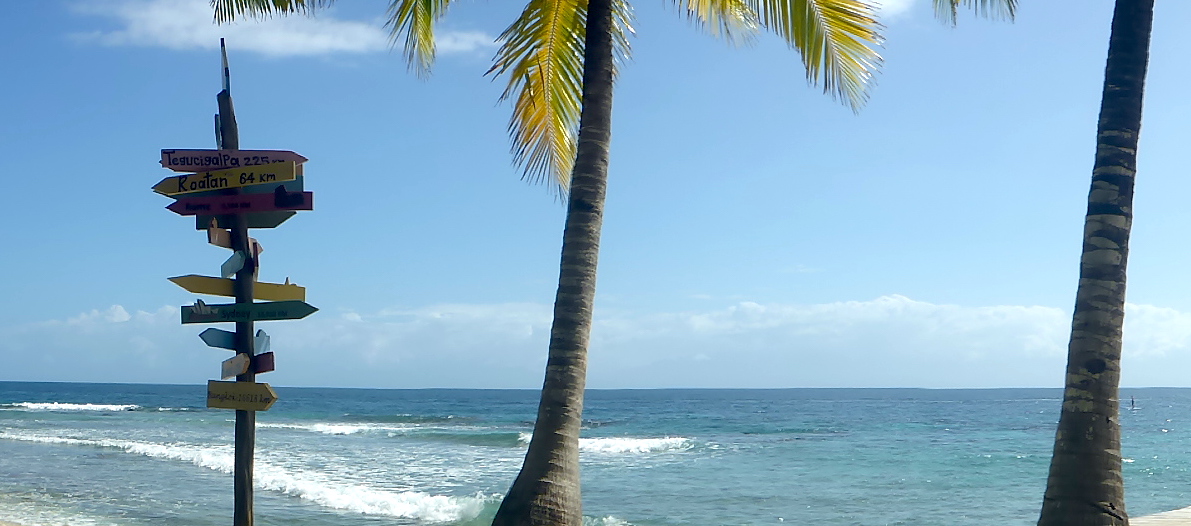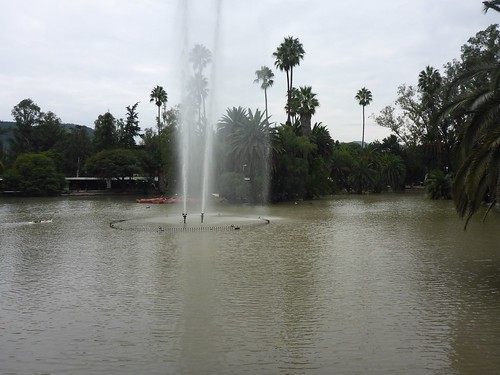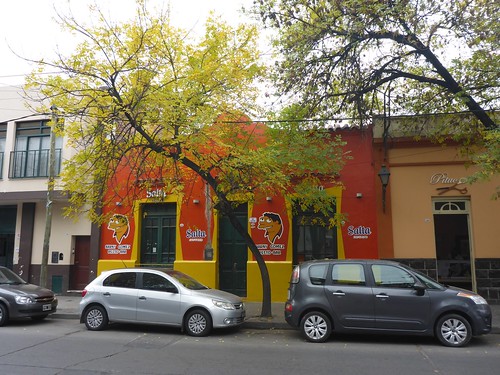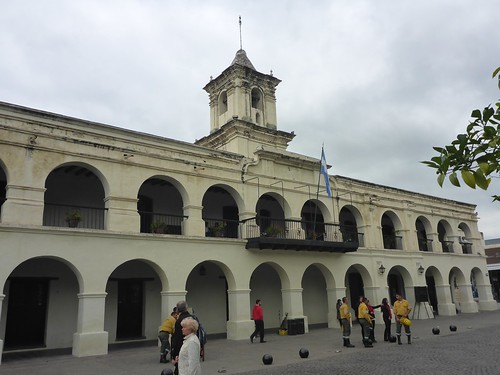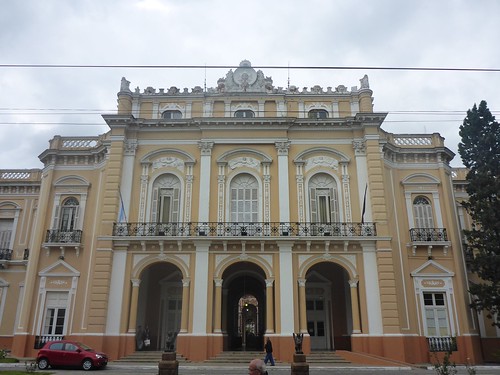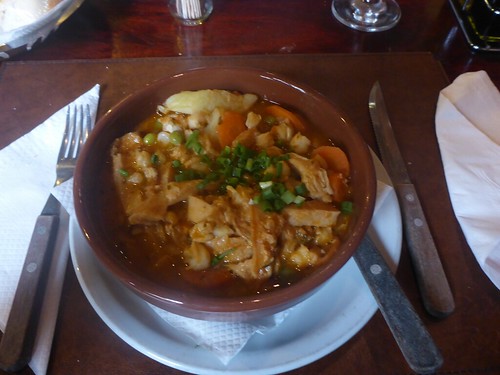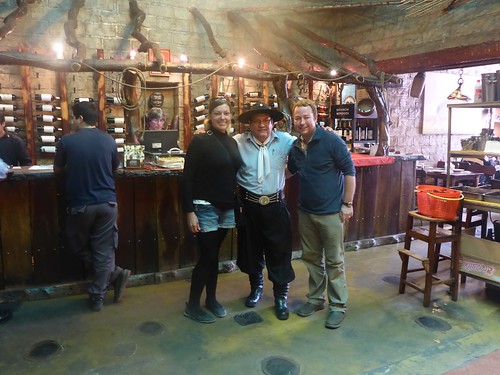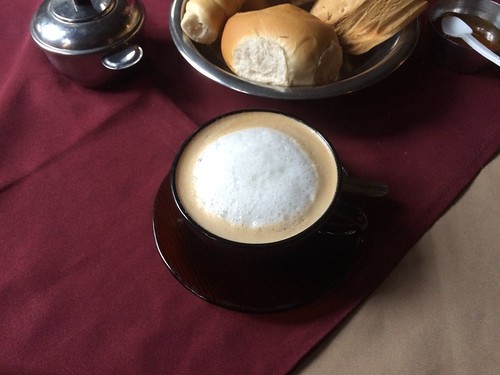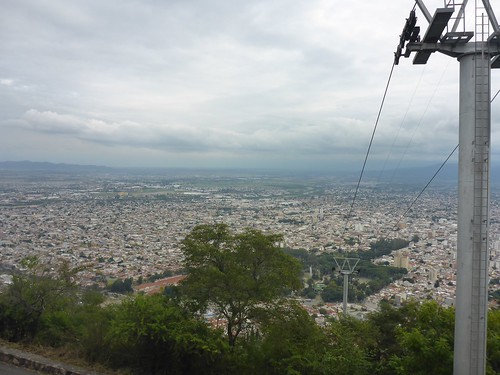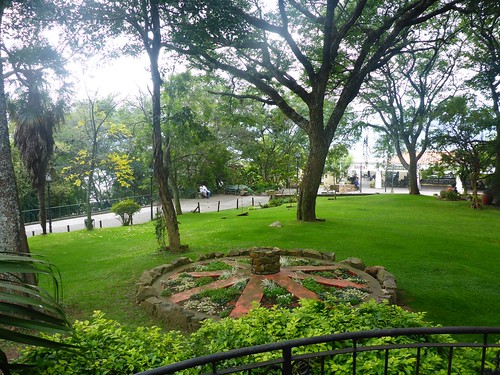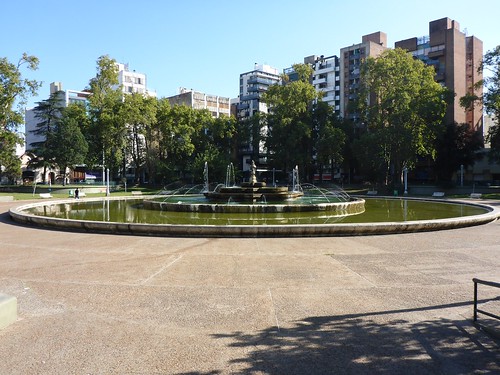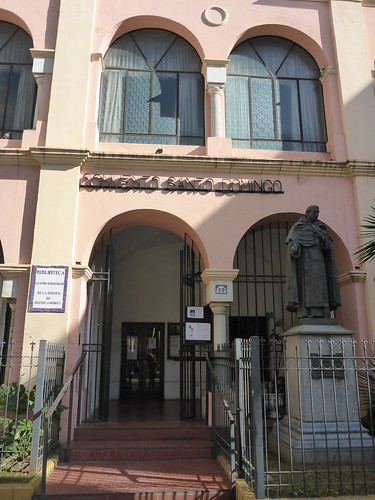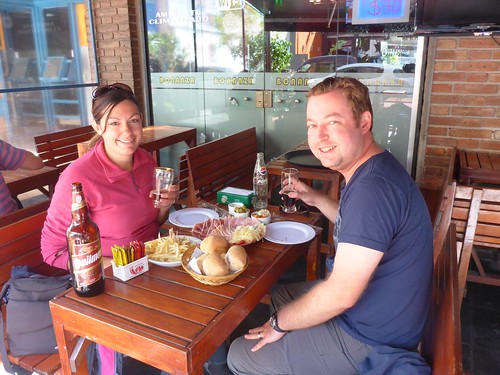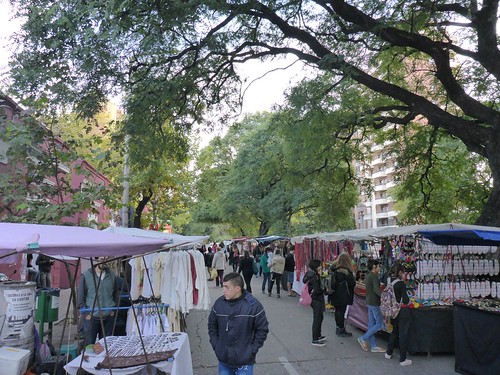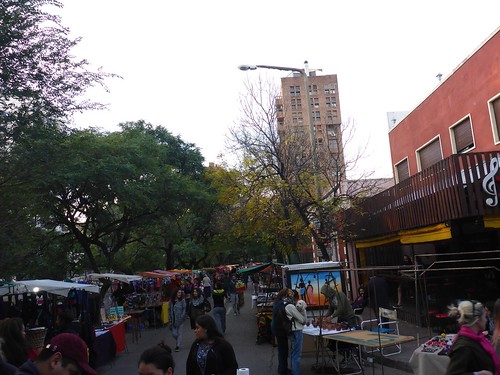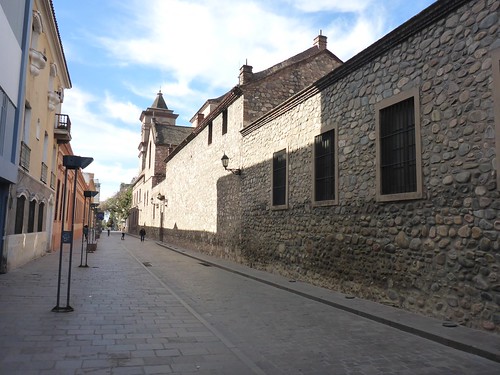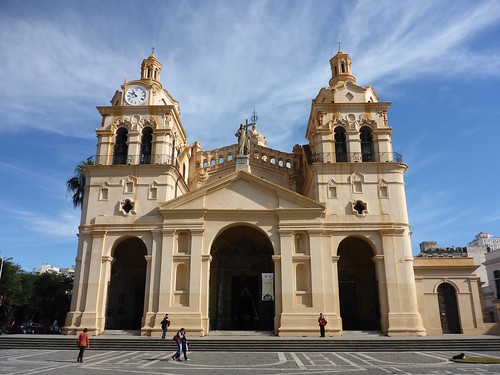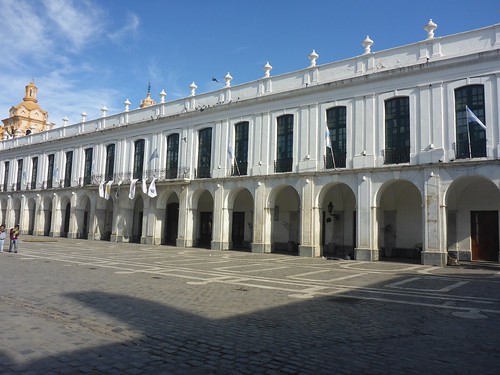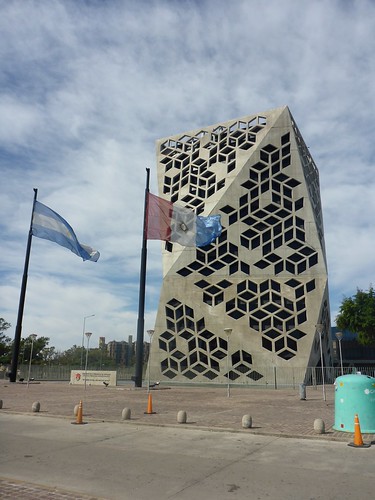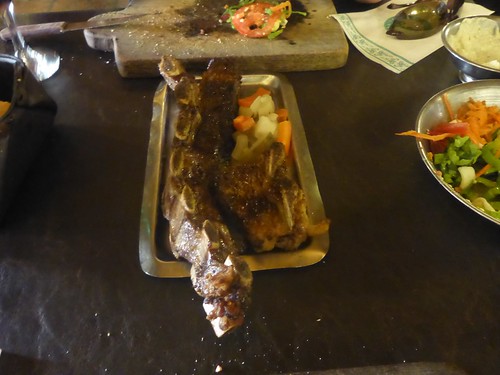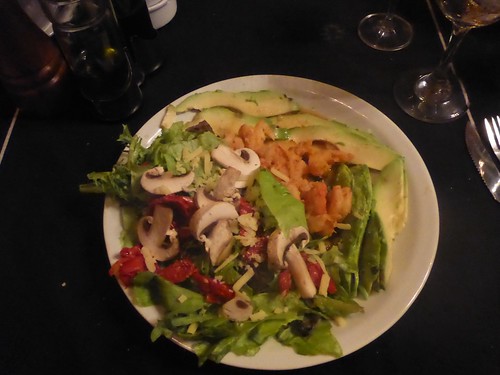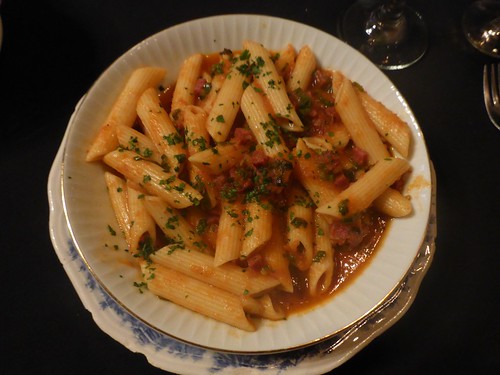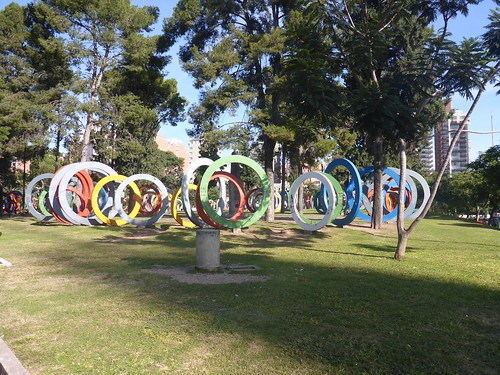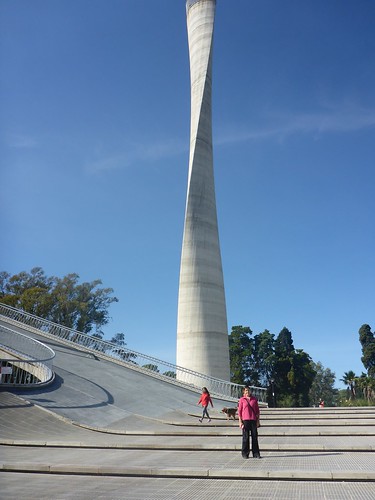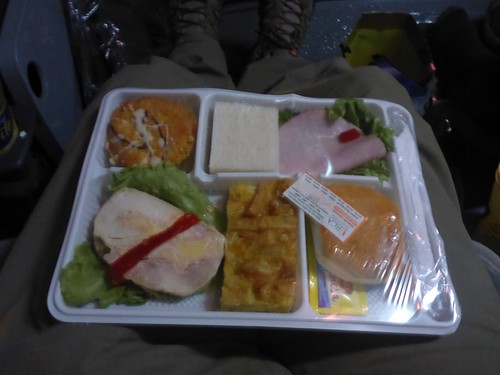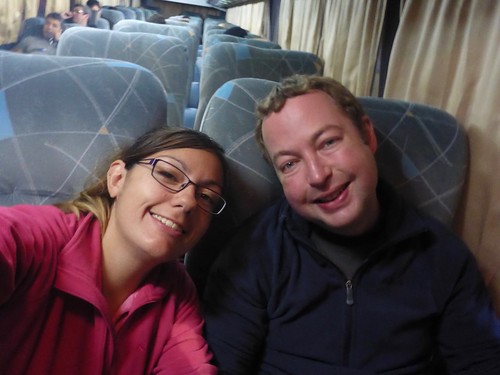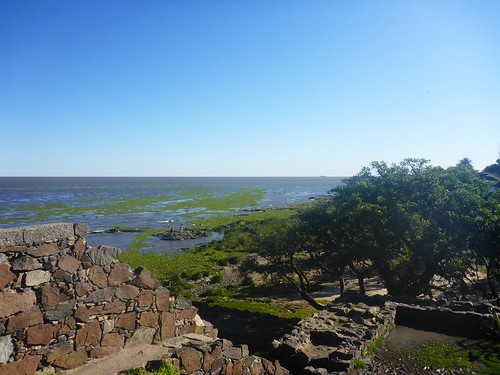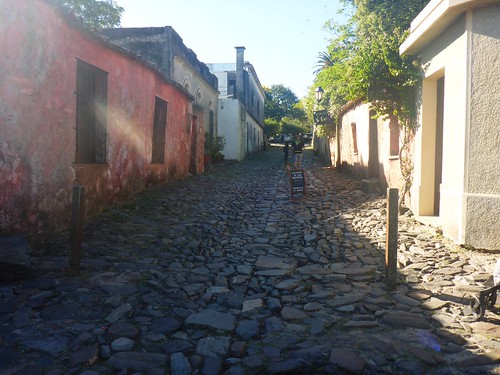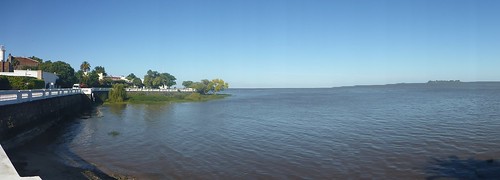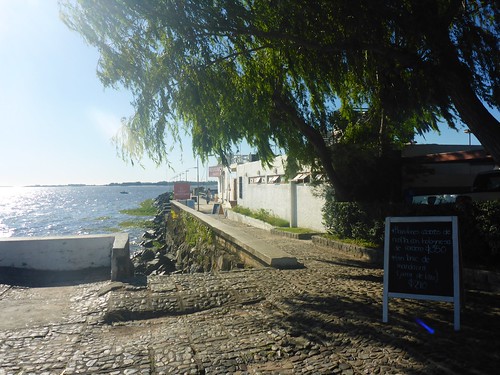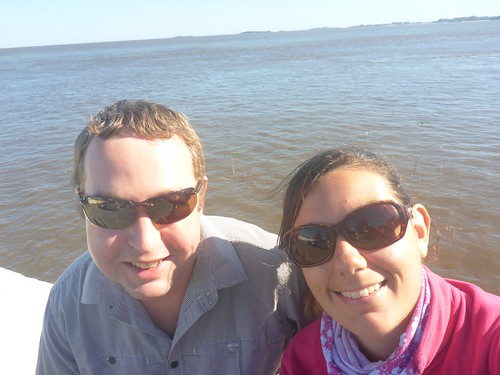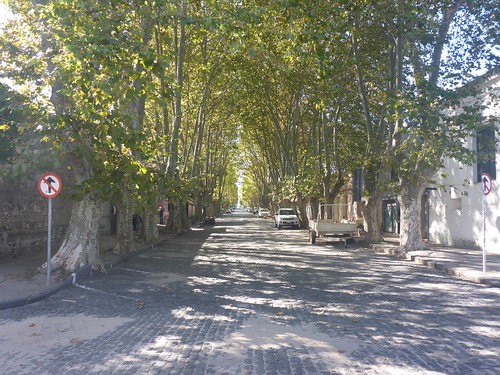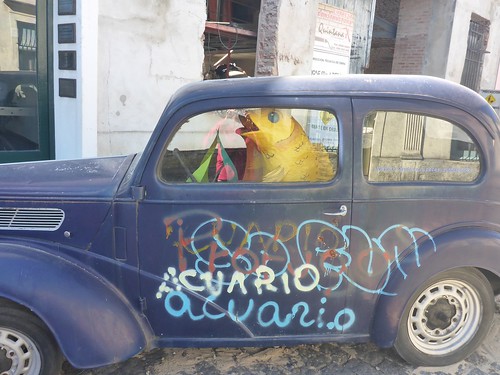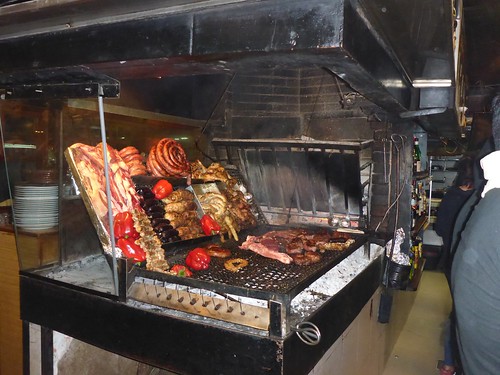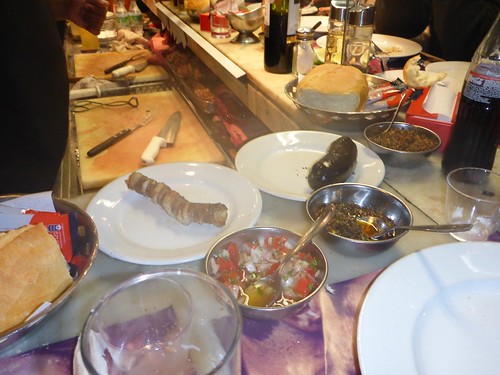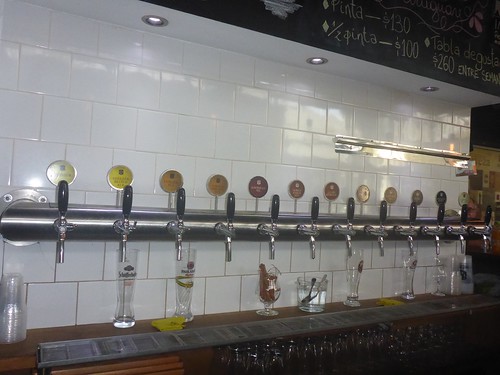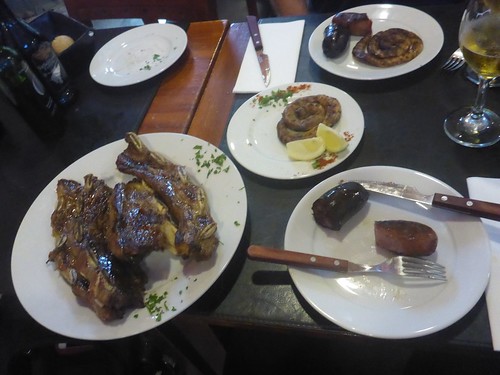Buenos Aires: The birth place of Tango, the place where soccer is a religion and home to the widest street in the world!
Saturday afternoon we arrived off the boat from Colonia Del Sacramento and as we’ve done in each place we’ve arrived to, we decided we should organise our transportation out to Cordoba. We’d thought that a train would be our best option, it was a longer trip than the bus, but much cheaper and there was an option for a private cabin. We started the walk to the train station as we weren’t able to book tickets online, not realising it was nearly 3km, hinting at rain and carrying 20kg packs each, only to find out that the train had already been booked out three months in advance. We’d also managed to arrive into Argentina without Argentinian pesos… money exchange doesn’t seem to be at the forefront of our plans when travelling around. After wandering for a total of an hour and a half to sort out the train and find an ATM we were finally on our way to “The Art Factory Hostel”.
Warmly welcomed by reception and the Activities Manager, Danny Boy, we were keen to start exploring Buenos Aires. A quick unpack in our giant room, we popped upstairs to the outside bar to chill out and settle in and plan our coming days in Buenos Aires, then headed to another amazing barbecue place for dinner.
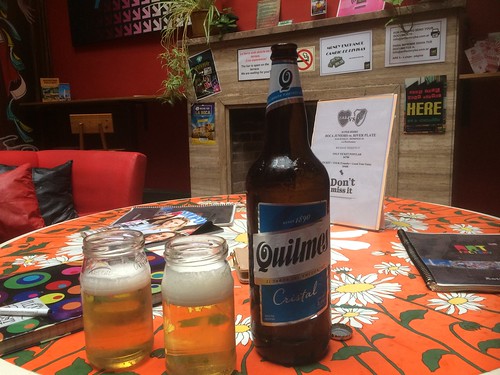
Sunday morning in Buenos Aires greeted us with our best hostel breakfast yet – it included hot scrambled eggs! Words cannot explain how much we loved having eggs for breakfast again, the only other time in South America we have had that is when we cooked them ourselves.
Like a few other places, BA has a “free” walking tour, and since we were going to be here for a while, doing it early sounded like a good idea since we could find out where to go for the rest of our days. We headed off early to make sure we got there in time for the start, and after walking for 20 minutes, James realised he had chosen “Teatro Colonial” in the map route not “Teatro Colón” so we were going the wrong way. A brisk 30-minute walk later to the correct meeting point, and we just got there in time.
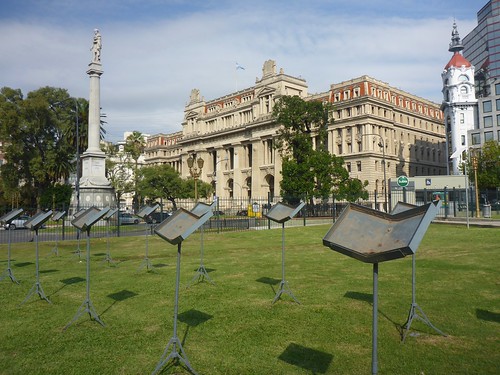
There were two tours at the same time, one in English and one in Spanish – one guide talked for about a minute in Spanish, and then said in English “if you didn’t understand those instructions, then follow me”. The walking tour was okay, showing us a few of the sights and old buildings on the north side of the inner city, but wasn’t as great as we expected – especially at the end when his “suggested tip amount” was 150 pesos ($15 AUD) per person. There was one cool story he told while at one of the mansions: the son in one of the richest and more aristocratic families in Argentina started dating a woman who was very wealthy but from a common family, and his mother did not approve and blocked their marriage. The mother was very religious and had donated a church to the city, which she could see from their mansion; so as an act of spite, the women who could not marry her son built a huge residence, then the tallest in south America, in between, so the mother could no longer see her church, and had to walk around the woman’s house every day she wanted to go to it. We saw quite a few of the popular buildings in BA and learnt a little about the history, but mostly heard stories of random families and didn’t get much of an opportunity to stop and take photos of the buildings. Our tour ended at one of the biggest Fig Trees that either of us had ever seen! It was massive, trying to get a photo underneath tree for a little perspective was difficult; thankfully, we could trust another of the tourists from our group who hadn’t already left to take a photo for us.
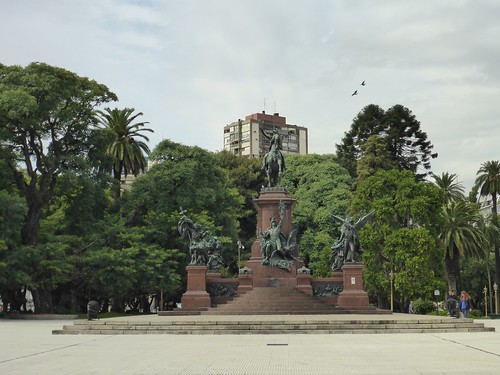
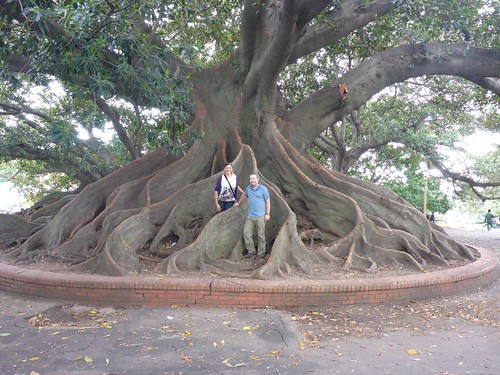
Trying to find somewhere for lunch, we ended up at a small artisanal shop that sold pretty much every salsa, oil, bread, salami and random jam that you could find in South America. We both had a try of the Cape Horn beers, and shared a steak sandwich that was pretty delicious. On our way back to the hostel, via a park, a cool looking door, and a “club” called ‘Club Shampoo’, neither of us could decide if we were still hungry or not. We stopped in at a café at the back of the Cabildo (colonial town council building) where a band was practicing, and then went off to do some march/event. While there we had a few beers and some peanuts, including a very nice scotch ale from a craft brewery called Antares.
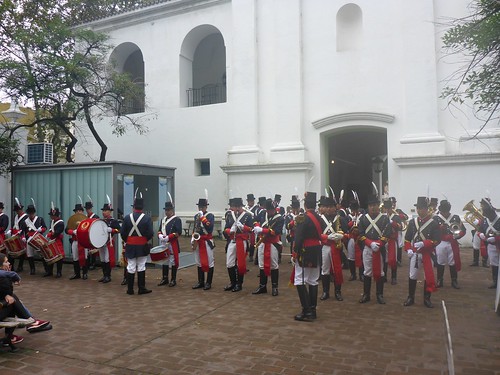
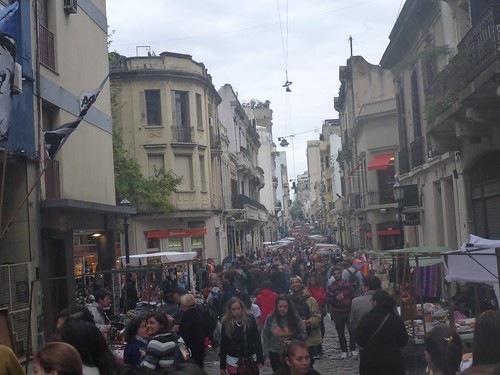
We spent the last part of the afternoon wandering through the local street markets with people selling mostly arts and crafts/knick knacks. We stopped for a quick bathroom break and our first proper taste of Argentinian wine at a Tango bar, catching the last bit of a Tango show, then headed back to the hostel briefly to organise ourselves some warmer clothes for the evening. We couldn’t decide what to have for dinner that night, but searching online we found that Antares had a craft beer bar only two blocks from our hostel! We toddled off there where we had several different pints of very tasty beer, and a share plate. By the end of all of this it may have been well and truly into the early hours of Monday morning, it was definitely time to stumble home to the hostel and get some sleep!
Monday morning it was time to go off and get the next of our photos of parliamentary buildings to keep up Tristan’s challenge. There was a bit of spotty rain, but we managed to avoid getting too wet. We crossed the world’s largest street, Avenida 9 de Julio, which is a massive sixteen lanes wide. Like most of South America, crossing the street here is like playing Russian Roulette, indicators are rarely used, many intersections don’t have pedestrian lights, and many drivers don’t seem to pay any kind of attention to traffic lights anyway. The difference in architecture in Buenos Aires compared to the other places in South America was rather substantial. Many of the buildings are influenced by European architecture, but not from a singular region. Quite regularly, there would be a French inspired building situated directly next door to an Italian styled building, next to a Spanish inspired building. The footpath lighting through the parks are all gold with many of them being home to the mud-nests of small birds.
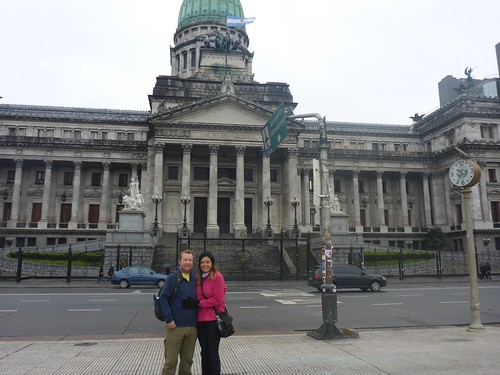
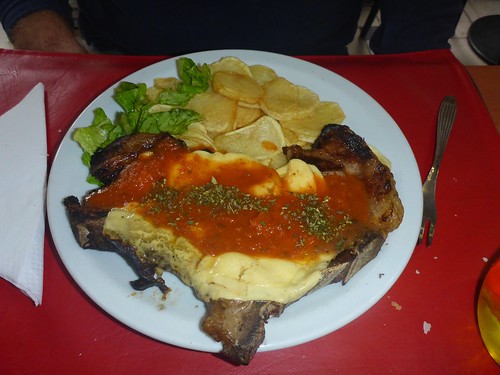
We stopped in for lunch at a café and opted for the “Menu Del Dia” (Menu of the Day), which ended up being much more food than either of us had expected for an excellent price of $10aud each – receiving a shared plate of breads, a bowl of vegetable soup each, a steak for James and the fish dish for Dee, plus an option of flan or coffee for dessert – we chose coffee. Although the outside temperature wasn’t freezing, the wind certainly had a decent chill on it. The cold was starting to get to Dee more so than James, but both of us, with runny noses from the wind, cold feet and generally starting to feel a little miserable, decided that we should go back to the hostel and catch up with a few of the other travellers, our hostel had quite the party scene happening, we were more than happy to be involved!
On Tuesday we headed back to Plaza de Mayo, where we stopped to take a look at the main cathedral in BA, which was pretty huge. We discovered that contained within it was the mausoleum of San Martin, who was the main leader in the liberation of the southern part of the continent from the Spanish empire. This area was guarded, and, as we left the changing of the guard occurred. They walk from the Cathedral down to the Casa Rosada, the residence of the president of Argentina, at the other end of Avenida 25 de Mayo. Unfortunately, the tours only operate on Saturday and Sunday, so we didn’t get to see inside. We were accosted by a volunteer for some group, who told us about various tourist attractions and places that we mostly already knew about, and then (as usual) were asked for some money for his “free” service, ostensibly going to whatever charity he was a volunteer for.
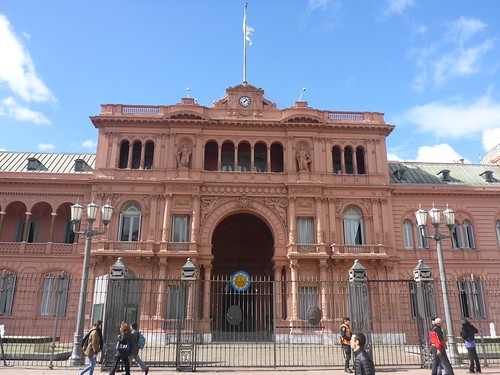
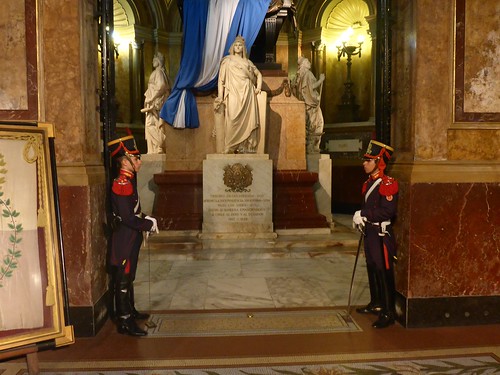
That afternoon we headed back to the Cabildo for a proper look inside, since it was now open to look around (for free!). There was a lot of interesting information about how decisions were made in the old colonial era town, and how parts of the building had been town down over the years to allow the construction and then widening of the Avenida 25 de Mayo that it sits in the middle of.
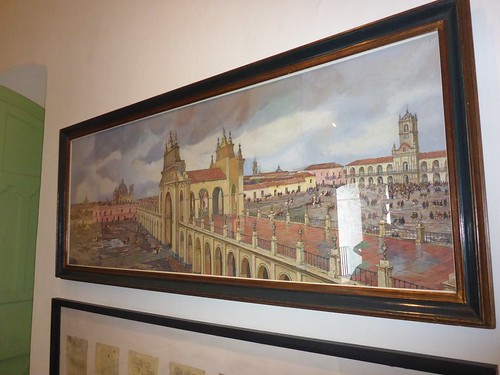
At this point we needed a break, to try to recover from travel and let everything we had seen soak in, so we spent the day mostly around the hostel relaxing, and catching up on tasks. That night the hostel had a free (pay a tip) tango lesson, before the option of heading out to a milonga to dance with the locals. Unfortunately Dee has two left feet, and James three, so it didn’t go so well. The steps weren’t too hard (although Dee missed the first part of the women’s introduction), but dealing with other people going different directions, and the furniture made it quite difficult that. James thought he was doing okay with two partners, before the change to a third who actually knew what they were doing and made him realise how bad he was. Dee, on the other hand, managed to hit everything and everyone within her path… This experience has led us to believe that neither of us should ever attempt dancing, ever, ever, again.
Thursday morning we decided to head to another of the suburbs of BA called Palermo. This suburb seemed like a fairly rich area, the notable absence of dog poo on the streets was the first indicator! We caught the subway for a grand total of $0.50aud and walked toward the main square and park, thinking it would be a large market type area. There was a children’s playground, and a couple of cute little cafes selling local beers; of course, we needed to try some. Palermo is the largest neighbourhood in BA and is divided into three areas: Palermo Hollywood, Palermo Soho and Palermo Viejo, each area encompassing different styles of living - fashionable, old school and arty. We spent much of the day taking in the scenery of Palermo, the lifestyle, the exorbitantly priced cafes and the cleanliness of the streets. Palermo is a beautiful area but nothing spectacular to write home about. We made our way back into the main part of BA, checking out the shopping strip along the way, then to the hostel for a bit of a chill.
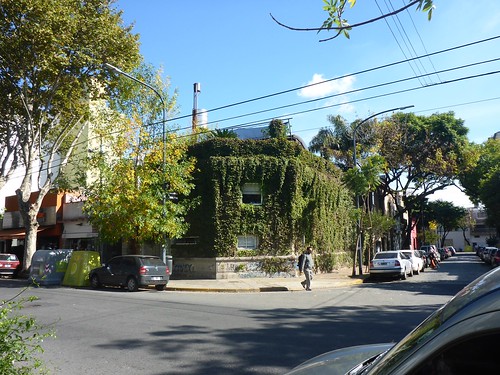
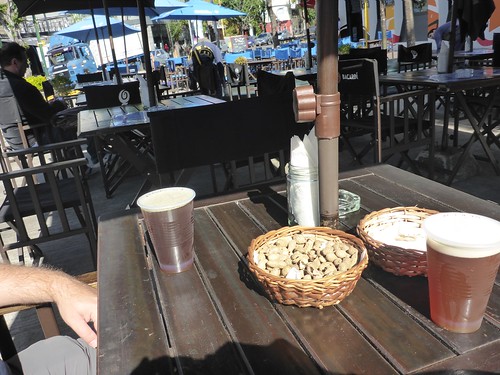
The following morning we felt it was time to head down toward Puerto Madero, a local district occupying a large amount of the Rio de le Plata. Originally the area was built because the original port, Puerto La Boca was too shallow and large ships weren’t able to moor in the port, instead having to ferry passengers and goods into the port. Porto Madero was completed in 1887; however due to the construction and use of larger cargo ships, the port became obsolete just ten years later. The port was neglected for many years with successive applications for development rejected; the area eventually becoming rundown and one of the city’s most degraded areas. In the early 90’s investment led to the port being completely regenerated with the assistance of renowned architects. The area has since become one of the city’s trendiest suburbs, with high-rise buildings, preserved bridges and cranes, a never-ending strip of cafes, restaurants and bars, as well as the Puente de la Mujer (the Women’s bridge). Being a beautiful sunny day, we decided to pull up a stool at one of the cafes by the shore and do a little Spanish practice. Dee still has trouble remembering what words are left and right (nothing different to the usual) and what inside and outside are… Best not to make too many comments on her directional skills ;).
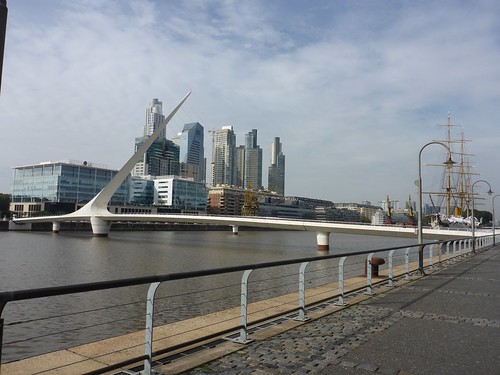
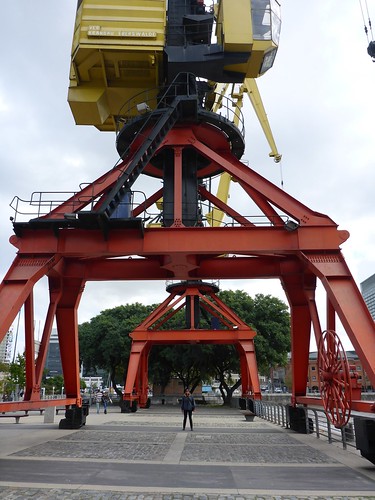
We wandered our way back toward San Telmo and came across a union protest, both of us were very confused as to what was happening; it looked very much like a political protest but there were people setting up barbecues and snack stalls, with a lot of people singing and banging drums. It was all very peaceful but massive political banners – everything that was happening seemed to be conflicting with each other. We tried to stay out of the way of what was happening but the event seemed to be taking up our entire suburb… we moved ourselves out of the way and found safety in what was supposed to be an amazing steak restaurant. The grill looked amazing but we seemed to have ordered ourselves braised steaks instead of barbecue steaks, although the meal was good it wasn’t barbecue :(. We spent the afternoon organising ourselves back at the hostel and chatting with Danny Boy about our adventures in BA before heading to the bus station for another overnight bus to Cordoba.
Buenos Aires was an interesting city to visit, there was a lot more European influence in the city than we’d expected, especially in comparison to what we’ve seen in South America so far. The contrast of buildings and the different areas in the city was quite surprising… Now to see if this influence is carried through the rest of Argentina!
Go see all the photos from Buenos Aires
